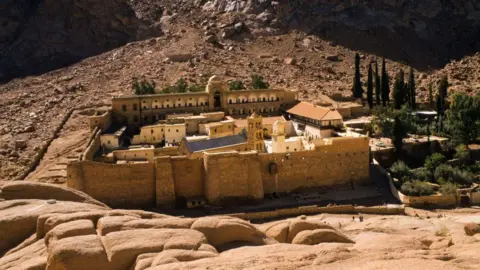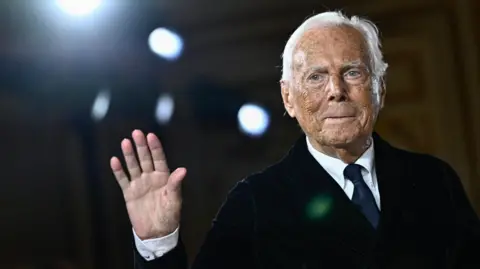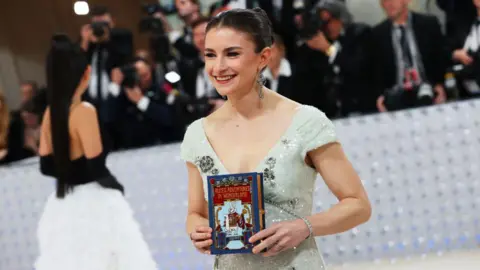In a vibrant pursuit of cultural heritage, India's textile scene is experiencing a renaissance that seeks to shine a light on the often-overlooked narratives woven into its fabric. One notable exhibition titled "Gamchha: From the Ordinary to the Extraordinary," held in New Delhi, showcased over 250 unique pieces of the gamchha, a multipurpose scarf predominantly worn by the working class across various Indian states. This traditional red-and-white chequered cloth, often used as a towel, turban, and shoulder drape, highlights the cultural significance of textiles that have long been ignored.
Curated by Jaya Jaitly, founder of the Dastkari Haat Samiti, the exhibition aimed to amplify the voice of these humble garments, transforming popular perception and spotlighting their role as symbols of social equality. "The garment has been continuously sidelined from the conversation," Jaitly noted, emphasizing the exhibition's role in reclaiming its narrative across different regions of India.
This initiative is part of a broader movement that includes various exhibitions reshaping the understanding of Indian textiles beyond the glamorous portrayals often associated with Indian fashion. The focus now lies on promoting local artisans and exploring diverse cloth-making traditions that encapsulate the essence of Indian society.
Ritu Sethi, founder of the Crafts Revival Trust, points out that modern technology, especially digital platforms like Instagram, is repositioning craftspeople from the shadows of anonymity into the limelight, fostering an environment of "technology-prompted egalitarianism" in the textile sector.
Recent exhibitions have included "Textiles of Bengal: A Shared Legacy" in Kolkata, featuring unique fabrics and garments from history, alongside interactive demonstrations of craft techniques, showcasing the deep-rooted relationship with textiles in Indian culture.
Notably, the "Take Pampa: Textiles of Karnataka" exhibition celebrated the textiles of local communities, including the Lambanis and Siddhi communities, illustrating their cultural histories and resilience through cloth narratives. Meanwhile, the "Surface: An Exhibition of Indian Embroideries and Surface Embellishment as Art" went beyond clothing to explore textiles in contemporary art installations.
Across India, exhibitions are embracing an inclusive and expansive historical perspective, addressing the social realities tied to textile production, including the caste and class struggles intertwined in the fabric of society.
As these dynamic exhibitions garner interest, there is a growing optimism that they will cultivate new audiences and inspire the next generation of textile designers. "The ultimate goal is to evolve this creative ecosystem by nurturing quality and encouraging collaboration," shared Mayank Mansingh Kaul, a key adviser to multiple textile exhibitions.
In this continuing exploration, Indian textiles are not just about their rich past but are evolving narratives showcasing craftsmanship, community, and cultural pride that deserve recognition on both national and global stages.
Curated by Jaya Jaitly, founder of the Dastkari Haat Samiti, the exhibition aimed to amplify the voice of these humble garments, transforming popular perception and spotlighting their role as symbols of social equality. "The garment has been continuously sidelined from the conversation," Jaitly noted, emphasizing the exhibition's role in reclaiming its narrative across different regions of India.
This initiative is part of a broader movement that includes various exhibitions reshaping the understanding of Indian textiles beyond the glamorous portrayals often associated with Indian fashion. The focus now lies on promoting local artisans and exploring diverse cloth-making traditions that encapsulate the essence of Indian society.
Ritu Sethi, founder of the Crafts Revival Trust, points out that modern technology, especially digital platforms like Instagram, is repositioning craftspeople from the shadows of anonymity into the limelight, fostering an environment of "technology-prompted egalitarianism" in the textile sector.
Recent exhibitions have included "Textiles of Bengal: A Shared Legacy" in Kolkata, featuring unique fabrics and garments from history, alongside interactive demonstrations of craft techniques, showcasing the deep-rooted relationship with textiles in Indian culture.
Notably, the "Take Pampa: Textiles of Karnataka" exhibition celebrated the textiles of local communities, including the Lambanis and Siddhi communities, illustrating their cultural histories and resilience through cloth narratives. Meanwhile, the "Surface: An Exhibition of Indian Embroideries and Surface Embellishment as Art" went beyond clothing to explore textiles in contemporary art installations.
Across India, exhibitions are embracing an inclusive and expansive historical perspective, addressing the social realities tied to textile production, including the caste and class struggles intertwined in the fabric of society.
As these dynamic exhibitions garner interest, there is a growing optimism that they will cultivate new audiences and inspire the next generation of textile designers. "The ultimate goal is to evolve this creative ecosystem by nurturing quality and encouraging collaboration," shared Mayank Mansingh Kaul, a key adviser to multiple textile exhibitions.
In this continuing exploration, Indian textiles are not just about their rich past but are evolving narratives showcasing craftsmanship, community, and cultural pride that deserve recognition on both national and global stages.



















